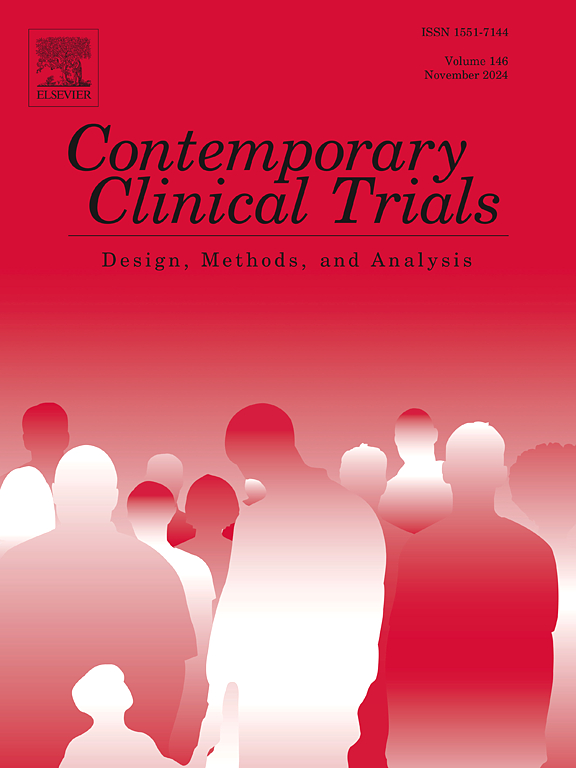Expedition for new symptom-specific TMS targets: Protocol for the first randomized causal circuit mapping trial
IF 1.9
3区 医学
Q3 MEDICINE, RESEARCH & EXPERIMENTAL
引用次数: 0
Abstract
Background
Functional neuroimaging has been used to map brain organization, but only identifies correlates of brain functions rather than causes. Causal brain mapping can be conducted by randomly applying transcranial magnetic stimulation (TMS) to different targets, as randomization controls for all confounders, and comparing clinical outcomes across different targeted circuits. Random targets can be systematically compared by mapping their functional connectivity to specific circuits. This study will build a multidimensional atlas of circuits that are causally involved in human brain function. We aim to identify TMS targets for a wide range of transdiagnostic constructs relevant to psychopathology from broad spectra (e.g., internalizing) to specific symptoms (e.g., worry) and processes (e.g. emotional regulation).
Methods/design
90 participants with major depression, obsessive-compulsive disorder, generalized anxiety disorder, or schizophrenia will receive 40 total sessions of accelerated intermittent theta burst stimulation (aiTBS). The first 20 sessions will be applied over two days to a random target in the left prefrontal cortex (PFC). A deep circuit-based phenotyping battery pre- and post-aiTBS will be conducted. Six weeks later, participants will receive 20 sessions of aiTBS to a different random target in the left PFC. Patients with schizophrenia will be offered an open-label extension with aiTBS to the rostromedial prefrontal cortex (rmPFC), a previously proposed, novel target for schizophrenia.
Discussion
We aim to map circuitry connected to TMS sites that causally modify transdiagnostic and diagnosis-specific behaviors. This will complement prior retrospective studies using incidental lesions and stimulation sites and aim to define optimal TMS target circuits across diagnoses.
探索新的症状特异性TMS靶点:第一个随机因果电路制图试验的方案。
背景:功能性神经影像学已被用于绘制大脑组织图,但只能识别大脑功能的相关性,而不能识别原因。因果脑映射可以通过随机应用经颅磁刺激(TMS)对不同的目标进行,作为所有混杂因素的随机对照,并比较不同目标回路的临床结果。随机目标可以通过将它们的功能连接映射到特定的电路来系统地进行比较。这项研究将建立与人类大脑功能有因果关系的多维电路图谱。我们的目标是从广谱(如内化)到特定症状(如担忧)和过程(如情绪调节),为与精神病理学相关的广泛的跨诊断构建确定经颅电刺激的目标。方法/设计:90名重度抑郁症、强迫症、广泛性焦虑症或精神分裂症患者将接受40次加速间歇性θ波爆发刺激(aiTBS)。前20个疗程将在两天内对左前额皮质(PFC)的随机目标进行应用。将在aitbs前后进行基于深度电路的表型电池。6周后,参与者将接受20次针对左侧pfc不同随机靶点的aiTBS治疗。精神分裂症患者将接受开放标签扩展的aiTBS治疗前额叶皮层(rmPFC),这是先前提出的精神分裂症的新靶点。讨论:我们的目标是绘制连接到经颅磁刺激位点的电路,这些位点会导致改变诊断和诊断特异性行为。这将补充先前使用偶然病变和刺激部位的回顾性研究,旨在确定跨诊断的最佳经颅磁刺激靶电路。
本文章由计算机程序翻译,如有差异,请以英文原文为准。
求助全文
约1分钟内获得全文
求助全文
来源期刊
CiteScore
3.70
自引率
4.50%
发文量
281
审稿时长
44 days
期刊介绍:
Contemporary Clinical Trials is an international peer reviewed journal that publishes manuscripts pertaining to all aspects of clinical trials, including, but not limited to, design, conduct, analysis, regulation and ethics. Manuscripts submitted should appeal to a readership drawn from disciplines including medicine, biostatistics, epidemiology, computer science, management science, behavioural science, pharmaceutical science, and bioethics. Full-length papers and short communications not exceeding 1,500 words, as well as systemic reviews of clinical trials and methodologies will be published. Perspectives/commentaries on current issues and the impact of clinical trials on the practice of medicine and health policy are also welcome.

 求助内容:
求助内容: 应助结果提醒方式:
应助结果提醒方式:


